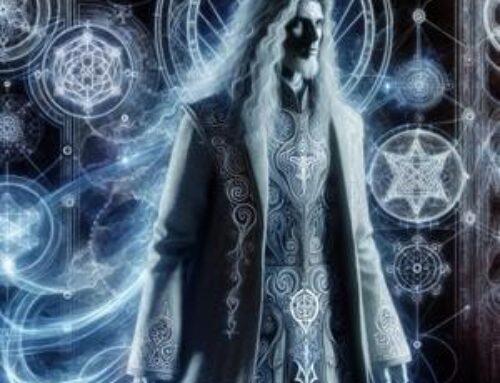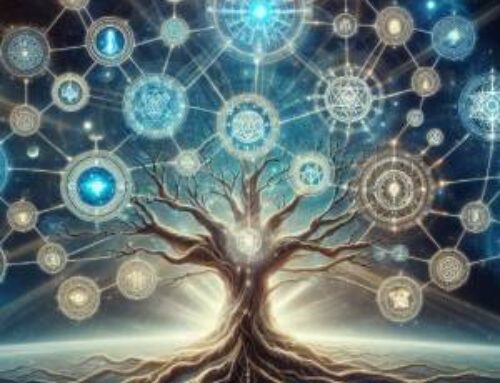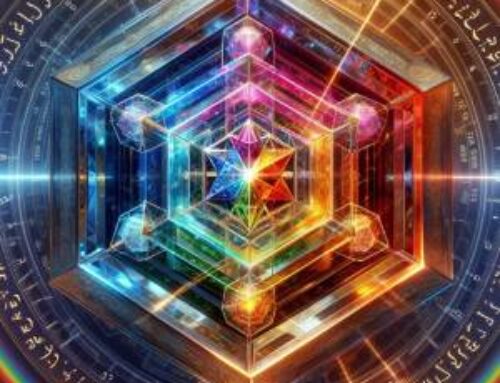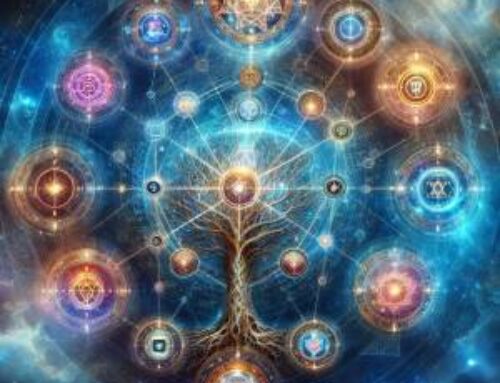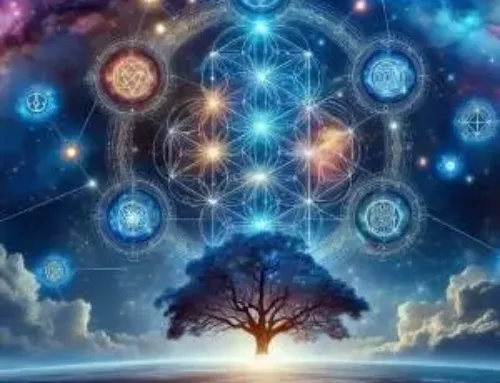Contents
- 1 Introduction to Freemasonry and Kabbalah
- 2 The Historical Roots and Esoteric Bonds
- 3 Deciphering the Symbolic Language
- 4 Alchemical Rituals of Initiation and Enlightenment
- 5 Conclusion
- 6 FAQ – Freemasonry and Kabbalah
- 6.1 1. What delineates Esoteric Freemasonry from its mainstream counterpart?
- 6.2 2. Why is Kabbalah pivotal in comprehending Freemasonry?
- 6.3 3. Is the study of Freemasonry and Kabbalah accessible to all, or confined to initiates?
- 6.4 4. What significance do rituals hold within Freemasonry and Kabbalah?
- 6.5 5. How might one embark upon the study of Freemasonry and Kabbalah?
- 7 References
Introduction to Freemasonry and Kabbalah
In the realms of spiritual pursuit and esoteric wisdom, few connections are as rich and historically intertwined as those between Freemasonry and Kabbalah. This exploration is not concerned with the oft-misunderstood, publicly-oriented facets of Freemasonry, which, over centuries, have sometimes diverged from their mystical roots in favor of political, economic, or social endeavors. Instead, our focus pierces the veil to reveal the hidden core of Esoteric Freemasonry, a path that, akin to the revered traditions of Martinez de Pasqually, has steadfastly preserved its allegiance to the Western Mystery Tradition.
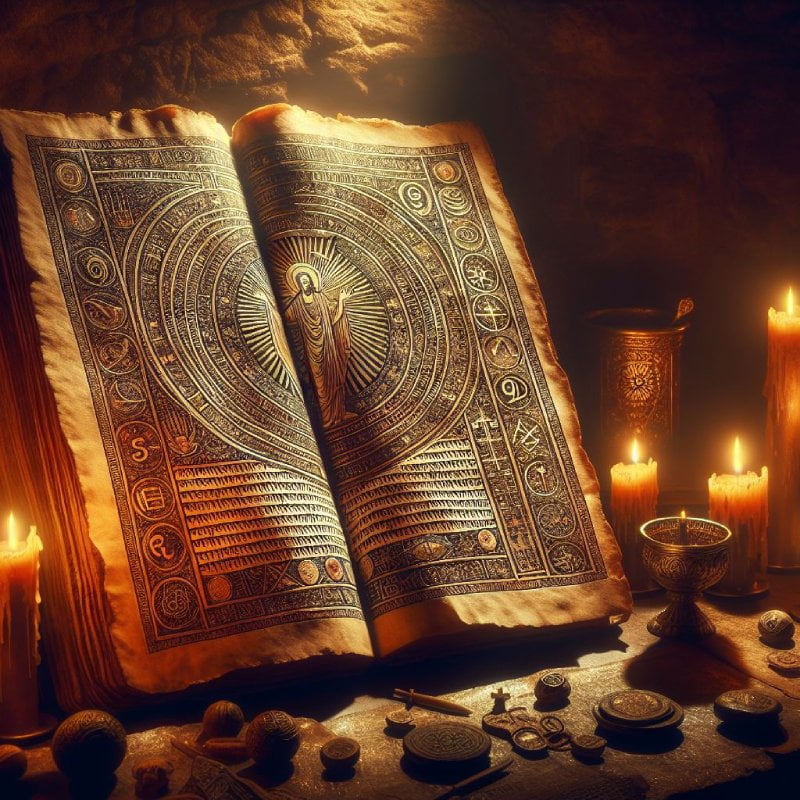
This is a journey into the heart of spiritual alchemy, where the intricate teachings of Kabbalah merge with the solemn rites of Freemasonry, forming a unified pathway towards enlightenment and the realization of divine truths. Here, misconceptions are dispelled like shadows at dawn, giving way to a luminous understanding of the sacred bonds that tie these traditions to the quest for universal harmony and personal transformation.
Far from the lodges that cater to the outer world’s demands, there exist sanctuaries of wisdom where the esoteric Mason seeks not societal accolades but the profound transformation of their inner landscape. This article aims to guide you through the mystical corridors where the ancient wisdom of Kabbalah and the sacred rituals of true Freemasonry dance in eternal symbiosis, illuminating the seeker’s path with the light of ageless knowledge. Welcome to the unveiled mysteries of Freemasonry and Kabbalah, where every symbol, every gesture, and every word is a step towards the sublime union with the All.
The Historical Roots and Esoteric Bonds
In the labyrinthine corridors of history, where spiritual traditions intertwine with the unfolding of human consciousness, the paths of Freemasonry and Kabbalah converge, rooted deeply in the fertile ground of the Western Mystery Tradition. This convergence is not merely coincidental but a testament to a shared quest for illumination and transcendence, a pursuit that transcends the boundaries of time and space, echoing the ancient yearnings of the human soul for divine union.
Ancient Wisdom, Modern Quest
The origins of Kabbalistic teachings and Masonic rites are often traced back to the mystic traditions of ancient civilizations.
Mysticism has evolved from ancient Greek mystery religions (1).
Egypt’s towering pyramids and Greece’s templed landscapes whisper tales of a profound understanding of the cosmos, of man’s place within it, and of the methods by which he might ascend to higher realms of being. These ancient wisdoms, encoded in myth and ritual, provided the initial threads from which the rich tapestry of Freemasonry and Kabbalah was woven.
The esoteric streams flowing from these ancient sources were neither stagnant nor monolithic; they were dynamic, absorbing influences, and evolving as they meandered through history. In this flux, Kabbalah emerged as a beacon of mystic Jewish thought, while Freemasonry, though later in formation, became a custodian of symbolic and operative knowledge, each carrying forward the torch of the Mysteries.
Martinez de Pasqually and Theurgic Practices
Among the luminaries who navigated these mystical currents, Martinez de Pasqually stands as a pivotal figure. His work, particularly within the Ordre des Chevaliers Maçons Élus Coëns de l’Univers, exemplifies the theurgic practices that sought to harness divine energies for spiritual transformation. Pasqually’s teachings, deeply imbued with Kabbalistic symbolism and Masonic principles, underscored the active engagement with the spiritual realms, a hallmark of Freemasonry’s quest for enlightenment.
Deciphering the Symbolic Language
At the heart of both Freemasonry and Kabbalah lies a profound language of symbols, a sacred lexicon that transcends words, reaching into the very essence of the soul’s journey towards enlightenment. This symbolic language serves not only as a bridge between the material and the spiritual but as a map guiding the initiate through the complex landscapes of the inner self towards the divine.
The Tree of Life
Central to Kabbalistic thought is the Tree of Life, a symbolic representation of the universe and the soul’s path through it (2). Its ten sephirot (spheres) and twenty-two paths outline the process of creation and the blueprint for return to the divine source. Freemasonry, with its emphasis on building—both of the self and of the spiritual temple—mirrors this journey. The Masonic ladder, with its rungs of virtue and knowledge, can be seen as parallel to the ascent of the Tree of Life, each step a stage in the soul’s progression towards higher consciousness.
Higher-order theories of consciousness have substantial empirical support, highlighting the crucial role of higher-order mental representations in conscious awareness (3).
The Square and Compasses
The square and compasses, so central to Freemasonic symbolism, represent the material and the spiritual, the earthbound and the celestial. Like the Tree of Life, which unites the heavens and the earth through its branches and roots, these tools remind the seeker of the necessity to balance the terrestrial with the celestial, action with contemplation. In their intersection, they form a dynamic harmony, a point of convergence where the divine and the human meet, reflecting the Kabbalistic marriage of wisdom (Chokmah) and understanding (Binah).
The Pillars of Solomon’s Temple
Standing as sentinels at the entrance to Solomon’s Temple, the pillars of Jachin (Hebrew: YKYN) and Boaz (Hebrew: BOZ) old deep esoteric significance in both traditions. In Kabbalah, they symbolize the balance between mercy and severity, the forces that govern the universe’s moral and spiritual order. In Freemasonry, they represent strength and establishment, the foundational virtues upon which the spiritual journey is built. Together, they encapsulate the dialectic of the spiritual path: the dynamic interplay of opposites that must be harmonized within the seeker’s soul.
Alchemical Rituals of Initiation and Enlightenment
At the core of Freemasonry and Kabbalah lies the transformative power of rituals and initiation. These sacred practices serve as gateways to higher consciousness, enabling the adept to transcend the limitations of the mundane world and embark on a profound journey of spiritual enlightenment. Through the alchemy of transformation, the initiate is guided from darkness into light, from ignorance to knowledge, and from the profane to the sacred.
The Gateway to the Mysteries
Initiation rituals in both traditions are not mere formalities but deeply symbolic processes that signify the aspirant’s readiness to enter a new phase of spiritual awakening. In Freemasonry, the degrees of initiation encapsulate lessons of moral and philosophical significance, each stage unveiling deeper layers of esoteric wisdom. Similarly, in Kabbalistic practice, initiation can be understood as the soul’s progressive immersion into the mysteries of the Tree of Life, with each sephirah representing a specific aspect of divine emanation and a particular stage of the soul’s journey towards enlightenment.
The Rituals of Contemplation and Invocation
Rituals in both Freemasonry and Kabbalah often involve meditative contemplation and the invocation of divine forces. These practices aim to align the individual’s will with the universal will, facilitating a profound connection with the divine. In Kabbalistic tradition, meditation on the names of God and the paths of the Tree of Life serves to draw down divine light into the soul, elevating the practitioner to higher states of consciousness. Freemasonic rituals, with their elaborate symbolism and allegorical enactments, serve a similar purpose, guiding the initiate through a symbolic journey of death and rebirth, emblematic of the soul’s purification and illumination.
The Work of Alchemical Transformation
The ultimate goal of these esoteric practices is the alchemical transformation of the self—a metamorphosis from leaden, base consciousness into spiritual gold. This work is internal and requires dedication, self-examination, and the constant striving for moral and spiritual perfection. The Kabbalistic pursuit of Tikkun, or the restoration of harmony in the individual and the cosmos, mirrors the Masonic quest for the building of the inner temple, a symbol of the perfected human being, in harmony with the laws of the universe and the divine architect.
Conclusion
The perusal of Freemasonry and Kabbalah is not simply a scholarly pursuit; it is a voyage of the spirit, a search for illumination amidst the shadows of being. As we navigate the pathways charted by these venerable traditions, we are beckoned not only to witness but to partake in the grand mosaic of the cosmos, to discover our locus within it, and to aid in the evolution of the divine schema.
The odyssey through the historical foundations, the mutual symbols, and the transformative rites of Freemasonry and Kabbalah unveils a deep interconnection—a conjoined vision of enlightenment and comprehension that surpasses the confines of any solitary tradition. It highlights a universal crusade for sapience, a longing for the streams of the perpetual wellspring of knowledge that resides beyond the curtain of the physical realm.
Knock, and It Shall Be Opened unto You
This journey, however, does not end with the acquisition of knowledge. It beckons a deeper engagement, an invitation to become a part of a living tradition that seeks not only personal transformation but the upliftment of humanity. The Hermetic Academy, as the initiatory repository and beacon of this esoteric wisdom, preserves this sacred lineage and extends its hand to those who hear the call, offering guidance, community, and a path to initiation into the mysteries.
FAQ – Freemasonry and Kabbalah
1. What delineates Esoteric Freemasonry from its mainstream counterpart?
A: Esoteric Freemasonry is steeped in the spiritual and mystical dimensions of Masonic teachings, plumbing the depths of symbolic and allegorical interpretations within Masonic rites. Contrary to mainstream Freemasonry, which may lean towards communal service, ethical philosophy, and brotherly ties, Esoteric Freemasonry pursues the obscure, veiled significances and its affiliations with the Western Mystery Tradition.
2. Why is Kabbalah pivotal in comprehending Freemasonry?
A: Kabbalah lays down a spiritual and mystical scaffold that profoundly imprints Freemasonry. The esoteric language, ceremonials, and doctrines of Kabbalah endow Masonic procedures with a profound comprehension of the cosmos, charting a course to spiritual enlightenment and the divine, mirroring the Masonic progression from obscurity towards illumination.
3. Is the study of Freemasonry and Kabbalah accessible to all, or confined to initiates?
A: Though certain insights and profounder teachings are earmarked for initiates, a broad expanse of knowledge remains accessible for those drawn to these avenues. Bodies such as the Hermetic Academy extend initiation, mentorship, and scholarship for aspirants across different phases of their spiritual odyssey, promoting the exploration and academic pursuit of these deep-rooted traditions.
4. What significance do rituals hold within Freemasonry and Kabbalah?
A: Rituals are pivotal to both traditions, acting as conduits to heightened awareness and instruments for spiritual metamorphosis. Through the ceremonial reenactment of hallowed texts and allegories, adepts manage to undergo internal evolution, tuning their intentions with universal laws and edging nearer to the divine essence.
5. How might one embark upon the study of Freemasonry and Kabbalah?
A: Initiating an authentic investigation, as provided by entities like the Hermetic Academy, marks the commencement of this profound inquiry.
References
(1) Parsons, W. (2019). Mysticism: An Overview. Oxford Research Encyclopedia of Religion. https://doi.org/10.1093/acrefore/9780199340378.013.55.
(2) Rubenstein, E. (2020). The Tree of Life: The Kabbalah of Immortality. Hermetic World, Paphos.
(3) Lau, H., & Rosenthal, D. (2011). Empirical support for higher-order theories of conscious awareness. Trends in Cognitive Sciences, 15, 365-373. https://doi.org/10.1016/j.tics.2011.05.009.

